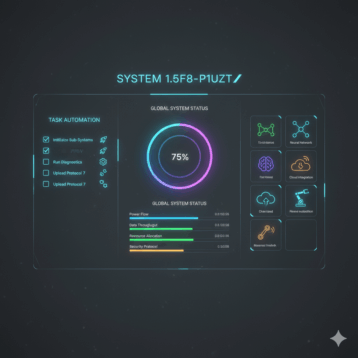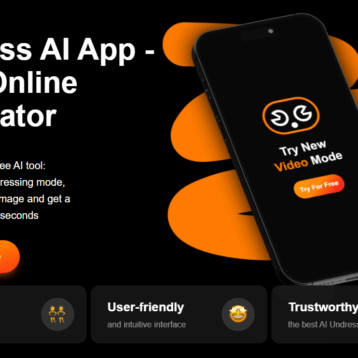
In today’s fast-paced and evolving workplace, the need for an integrated approach to employee training and performance management has never been more crucial. As organizations strive to optimize employee development, the integration of a Learning Management System (LMS) with Performance Management Systems (PMS) has emerged as a powerful solution.
This featured post will explore key strategies on how businesses can seamlessly integrate their LMS platforms, like the bridge app with PMS, maximizing productivity, engagement, and overall performance.
1. Understanding The Need for Integration
Understanding the benefits of integrating Learning Management Systems (LMS) with Performance Management Systems (PMS) is crucial before exploring how to combine them effectively. This integration presents considerable advantages for organizations. By merging LMS and PMS, companies can ensure that their educational programs and training initiatives are directly aligned with the specific performance objectives of their employees.
This seamless alignment helps in creating a more cohesive and efficient working environment. It fosters a culture of continuous learning and improvement, where employees are encouraged and supported to meet their performance goals through targeted learning opportunities. This not only enhances employee skills but also drives organizational growth and success.
2. Mapping Competencies and Learning Objectives
Integrating Learning Management Systems (LMS) with Performance Management Systems (PMS) is a crucial step for organizational development. This process begins with mapping competencies to learning objectives, a pivotal task that ensures the alignment of employee skills with the organization’s goals. By identifying the competencies required for specific job roles and linking them with targeted learning objectives in the LMS, organizations effectively bridge the gap between expected and actual skills.
This structured approach not only enhances employee performance by providing relevant learning opportunities but also streamlines the development process, making it more targeted and efficient. Through this, organizations optimize their workforce capabilities, promoting growth and competitiveness.
3. Leveraging a Shared Framework
To ensure effective integration, companies should adopt a shared framework that links learning activities and performance metrics coherently. A unified framework allows various teams responsible for training content creation and performance management to collaborate more efficiently.
4. Real-time Tracking of Training Progress
An integral facet of integrating LMS with PMS is real-time tracking of training progress within the performance management system itself. By incorporating automatic data synchronization between these systems, managers gain instant visibility on employee skill development directly from their PMS dashboard.
5. Combining Ongoing Feedback With Learning Initiatives
Pairing ongoing feedback mechanisms in your PMS tool with relevant learning resources boosts productivity while ensuring continuous improvement among employees. Encouraging managers to provide regular feedback within the PMS not only enhances motivation but also helps identify skill gaps that can be addressed through the LMS.
6. Matching Performance Goals With Learning Content
Through integration, organizations can create a cohesive system where employee performance goals are directly linked with appropriate learning content. This process involves mapping specific courses or training modules available in a Learning Management System (LMS) to the precise performance objectives outlined in a Performance Management System (PMS). The result is a tailored approach to skills development that is directly relevant to the requirements of individual job roles, enhancing the overall effectiveness of training programs.
7. Facilitate Seamless Single Sign-On (SSO)
Simplifying access for employees is a key aspect of integrating learning management systems. Implementing a Single Sign-On (SSO) solution allows users to seamlessly transition between their performance management system and LMS using single credentials, saving time and effort.
8. Automate Reporting and Analytics
Integrating LMS with PMS enables the automatic generation of comprehensive reports and analytics on individual and team-based skill development progress. This data-driven approach empowers organizations to make informed decisions about learning initiatives, identify high-impact training methods, and optimize resource allocation effectively.
9. Providing Personalized Learning Paths
By integrating LMS with PMS, organizations can deliver personalized learning paths based on individual employee performance. Leveraging data from the PMS, the LMS can recommend specific courses or training modules tailored to address skill gaps, ensuring targeted development opportunities.
10. Including Performance Metrics in Training Evaluation
Integrating performance metrics from the PMS into training evaluation processes within the LMS provides a holistic view of employee development. By analyzing both learning outcomes and overall performance metrics, organizations can identify correlations and optimize their training initiatives accordingly.
11. Enhancing Collaboration through Social Learning
An integrated LMS-PMS approach allows for the incorporation of social learning tools, fostering collaboration and knowledge sharing among employees. By creating an environment where individuals can exchange insights and experiences related to their performance goals and learning journeys, organizations can drive engagement while supporting a culture of continuous improvement.
Conclusion
As businesses strive for enhanced productivity while prioritizing employee development, integrating an LMS with a Performance Management System emerges as a game-changer. Through concrete strategies such as mapping competencies, leveraging shared frameworks, real-time tracking of training progress, ongoing feedback integration, matching performance goals with learning content, facilitating seamless SSO, and automating reporting and analytics, companies can streamline their processes with ease.
The alignment between these systems enhances organizational efficiency while fostering skill improvement at individual levels — truly shaping tomorrow’s workforce today. So take that first step now: unlock your organization’s potential by seamlessly integrating your LMS with your Performance Management System.










